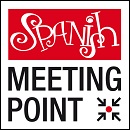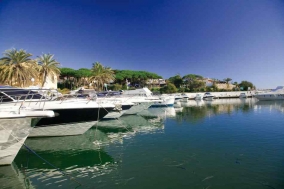Spanish schools and accommodation to study Spanish in Spain
Recent posts
Last schools
introduced
introduced
1 Accommodation

1 Spanish schools

Learning Spanish in Marbella. The tourist guide to study your Spanish course.
Marbella means Spanish Jet Set traditional coast destination. Learn Spanish in Marbella: enjoy its twenty four beaches, the sun, the luxury tourist enclave of Puerto Banús and friendliness of Spanish teachers.
General Information. 135,000 inhabitants. 591 kilometres south of Madrid. Marbella is the eighth most populated city in Andalusia and the main tourist resort on the Mediterranean Costa del Sol; it is situated between Málaga and the Strait of Gibraltar. Marbella is a very attractive place to study Spanish with some language schools offering a wide range of courses.
Surrounding Areas. Various nearby towns and villages are worth visiting: San Pedro de Alcántara (10 kilometres), Ojén (10 kilometres), Istán (19 kilometres), Benahavis (23 kilometres), Mijas (35 kilometres) and Ronda (61 kilometres)... in the mountains; and Estepona (33 kilometres), Fuengirola (35 kilometres), Benalmádena (36 kilometres) and Torremolinos (46 kilometres)... on the coast. Puerto Banús, a luxury tourist enclave built around a marina, is just four kilometres to the west.
Main Sights. It is worth highlighting the old quarter of Marbella, where you can see the fortified citadel known as "The Castle" (El Castillo). In the same area you will also find the Town Hall building (Ayuntamiento), ‘Orange Tree Square' (Plaza de los Naranjos) and the Chapel of St. James the Apostle (Capilla de Santiago Apóstol), which dates from 1552. Another place of interest is the Antiguo Hospital Bazán, a Renaissance hospital which now houses a museum.
Culture. The most important festivals are the Marbella International Film Festival (October), geared towards independent cinema, the Jazz Festival (May), and the Marbella Grill Festival (September), a pop music event. Places of cultural interest in the city include the Centro Cultural El Ingenio, various museums such as the Museo Cortijo Miraflores, the Museo del Bonsái, the Museo del Grabado Español Contemporáneo, devoted to contemporary Spanish engraving, and the Museo Ralli, as well as a number of art galleries: Arte-Marbella, Art Wanson Gallery and Art & Gráfica. As for concert halls and theatres, the main venues are the Auditorio Parque de la Constitución, the Teatro Ciudad de Marbella and the alternative Black Box Teatro.
Beaches. Marbella has no fewer than 24 urban beaches characterised by moderate waves and golden or dark sand, although some have pebbles and stones. The most well-known are the ones located in the city itself, Puerto Banús and San Pedro Alcántara, both of which are blue flag beaches, Artola and Cabopino, a beach for nudists. There is a splendid seafront promenade which stretches all the way to Puerto Banús. The beaches are a major attraction for the many students who decide to study Spanish in Marbella.
Shopping. The city centre shops are located in the old quarter and in Calle Ricardo Soriano and adjoining streets. Another important shopping area in Marbella is Puerto Banús, where, among the luxury cars and yachts, all the leading international fashion brands can be found. The city itself also has several shopping centres, such as La Cañada and Marina Banús, and on certain days of the week there are street markets in the Las Chapas neighbourhood, Puerto Banús and Guadalmina.
Gastronomy. There is a huge range of bars and restaurants in different areas of Marbella: the old quarter, the seafront promenade, Puerto Banús and the old fishing harbour. The most typical local dishes are fritura de pescado, or pescaito frito (assorted deep-fried fish), sardines, gilthead bream, sea bass... which are baked in a salt crust (a la sal) or threaded onto wooden skewers and grilled barbecue-style (en espeto), a common sight at the beachfront restaurants, especially at night. As for confectionery, it is well worth trying the tortas de aceite (a type of sweet biscuit made with olive oil), torrijas (bread dipped in milk and egg, fried and then sugared) and churros (deep-fried fritter sticks sprinkled with sugar).
Sports. There are 21 golf courses in the area, including Spain's only floodlit course, marinas such as Banús, Marbella and Cabopino, and facilities for horse riding, tennis and hang-gliding. There are also numerous nautical sports options that you can learn here.
Fiestas. The most important festivities in Marbella are the Carnival, Holy Week and the Fiestas de San Bernabé (11th June), a week-long celebration in honour of Marbella's patron saint, St. Barnabas, which begins with a pilgrimage and continues with an extensive programme of contests and activities.
Transport. Marbella is linked to Málaga by motorway, and there is a tourist train which offers a tour of the main sights of interest. It is easy to get from Marbella to other Spanish cities by train or by using the various coach services.
Nightlife. Students who decide to study Spanish in Marbella will discover a very active nightlife. There are several good areas in Marbella for a night on the town, such as the Marbella marina and its seafront promenade in the city centre, with a dazzling array of bars, both traditional and modern. Cabopino (15 kilometres) is another lively area, but the place for partying the night away is Puerto Banús (or simply "el puerto", as it is popularly known), visited by nearly five million people a year; its small streets are packed with bars, taverns, pubs and discotheques, some of which stay open until the sun comes up.
General Information. 135,000 inhabitants. 591 kilometres south of Madrid. Marbella is the eighth most populated city in Andalusia and the main tourist resort on the Mediterranean Costa del Sol; it is situated between Málaga and the Strait of Gibraltar. Marbella is a very attractive place to study Spanish with some language schools offering a wide range of courses.
Surrounding Areas. Various nearby towns and villages are worth visiting: San Pedro de Alcántara (10 kilometres), Ojén (10 kilometres), Istán (19 kilometres), Benahavis (23 kilometres), Mijas (35 kilometres) and Ronda (61 kilometres)... in the mountains; and Estepona (33 kilometres), Fuengirola (35 kilometres), Benalmádena (36 kilometres) and Torremolinos (46 kilometres)... on the coast. Puerto Banús, a luxury tourist enclave built around a marina, is just four kilometres to the west.
Main Sights. It is worth highlighting the old quarter of Marbella, where you can see the fortified citadel known as "The Castle" (El Castillo). In the same area you will also find the Town Hall building (Ayuntamiento), ‘Orange Tree Square' (Plaza de los Naranjos) and the Chapel of St. James the Apostle (Capilla de Santiago Apóstol), which dates from 1552. Another place of interest is the Antiguo Hospital Bazán, a Renaissance hospital which now houses a museum.
Culture. The most important festivals are the Marbella International Film Festival (October), geared towards independent cinema, the Jazz Festival (May), and the Marbella Grill Festival (September), a pop music event. Places of cultural interest in the city include the Centro Cultural El Ingenio, various museums such as the Museo Cortijo Miraflores, the Museo del Bonsái, the Museo del Grabado Español Contemporáneo, devoted to contemporary Spanish engraving, and the Museo Ralli, as well as a number of art galleries: Arte-Marbella, Art Wanson Gallery and Art & Gráfica. As for concert halls and theatres, the main venues are the Auditorio Parque de la Constitución, the Teatro Ciudad de Marbella and the alternative Black Box Teatro.
Beaches. Marbella has no fewer than 24 urban beaches characterised by moderate waves and golden or dark sand, although some have pebbles and stones. The most well-known are the ones located in the city itself, Puerto Banús and San Pedro Alcántara, both of which are blue flag beaches, Artola and Cabopino, a beach for nudists. There is a splendid seafront promenade which stretches all the way to Puerto Banús. The beaches are a major attraction for the many students who decide to study Spanish in Marbella.
Shopping. The city centre shops are located in the old quarter and in Calle Ricardo Soriano and adjoining streets. Another important shopping area in Marbella is Puerto Banús, where, among the luxury cars and yachts, all the leading international fashion brands can be found. The city itself also has several shopping centres, such as La Cañada and Marina Banús, and on certain days of the week there are street markets in the Las Chapas neighbourhood, Puerto Banús and Guadalmina.
Gastronomy. There is a huge range of bars and restaurants in different areas of Marbella: the old quarter, the seafront promenade, Puerto Banús and the old fishing harbour. The most typical local dishes are fritura de pescado, or pescaito frito (assorted deep-fried fish), sardines, gilthead bream, sea bass... which are baked in a salt crust (a la sal) or threaded onto wooden skewers and grilled barbecue-style (en espeto), a common sight at the beachfront restaurants, especially at night. As for confectionery, it is well worth trying the tortas de aceite (a type of sweet biscuit made with olive oil), torrijas (bread dipped in milk and egg, fried and then sugared) and churros (deep-fried fritter sticks sprinkled with sugar).
Sports. There are 21 golf courses in the area, including Spain's only floodlit course, marinas such as Banús, Marbella and Cabopino, and facilities for horse riding, tennis and hang-gliding. There are also numerous nautical sports options that you can learn here.
Fiestas. The most important festivities in Marbella are the Carnival, Holy Week and the Fiestas de San Bernabé (11th June), a week-long celebration in honour of Marbella's patron saint, St. Barnabas, which begins with a pilgrimage and continues with an extensive programme of contests and activities.
Transport. Marbella is linked to Málaga by motorway, and there is a tourist train which offers a tour of the main sights of interest. It is easy to get from Marbella to other Spanish cities by train or by using the various coach services.
Nightlife. Students who decide to study Spanish in Marbella will discover a very active nightlife. There are several good areas in Marbella for a night on the town, such as the Marbella marina and its seafront promenade in the city centre, with a dazzling array of bars, both traditional and modern. Cabopino (15 kilometres) is another lively area, but the place for partying the night away is Puerto Banús (or simply "el puerto", as it is popularly known), visited by nearly five million people a year; its small streets are packed with bars, taverns, pubs and discotheques, some of which stay open until the sun comes up.
© TEXT: SPANISH IN TOUR.
VIDEO: Patronato de Turismo de Marbella
VIDEO: Patronato de Turismo de Marbella























